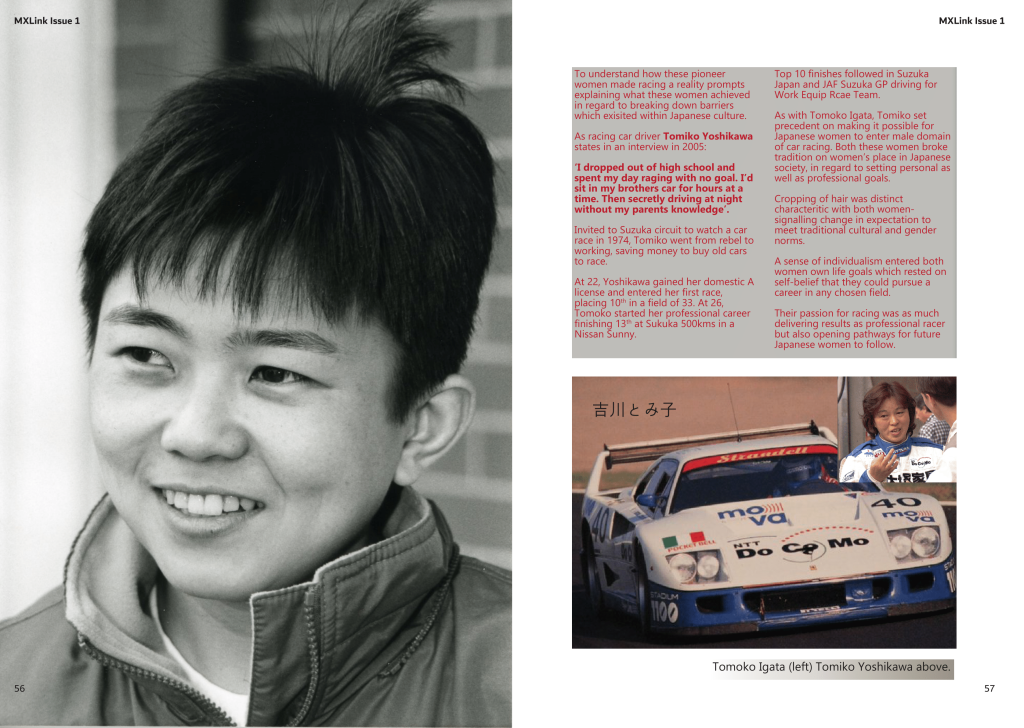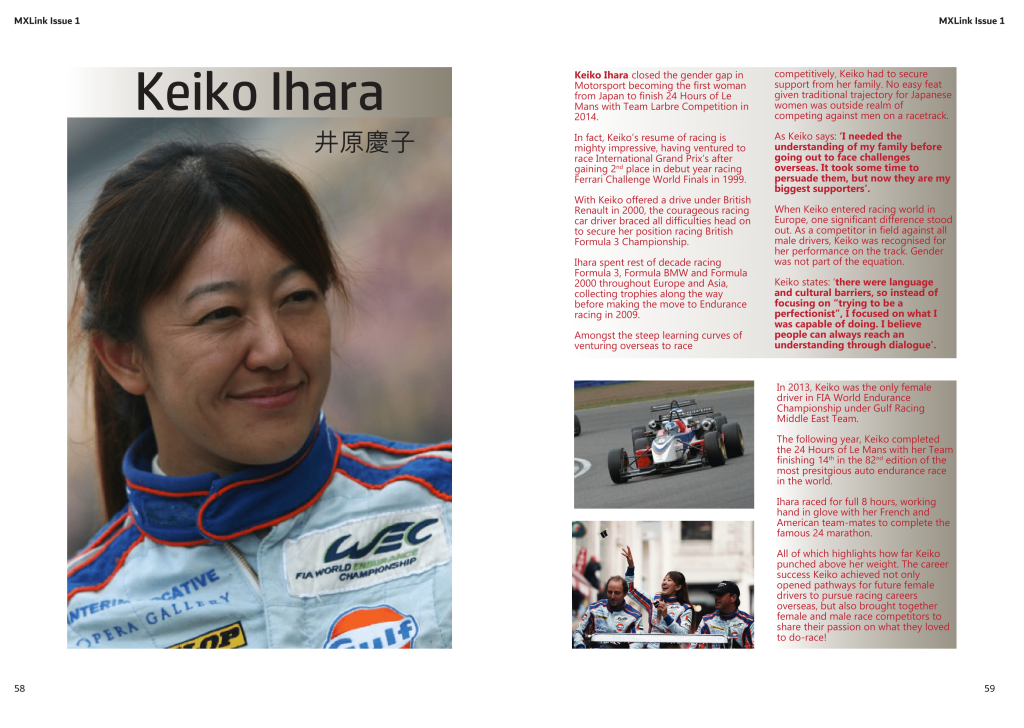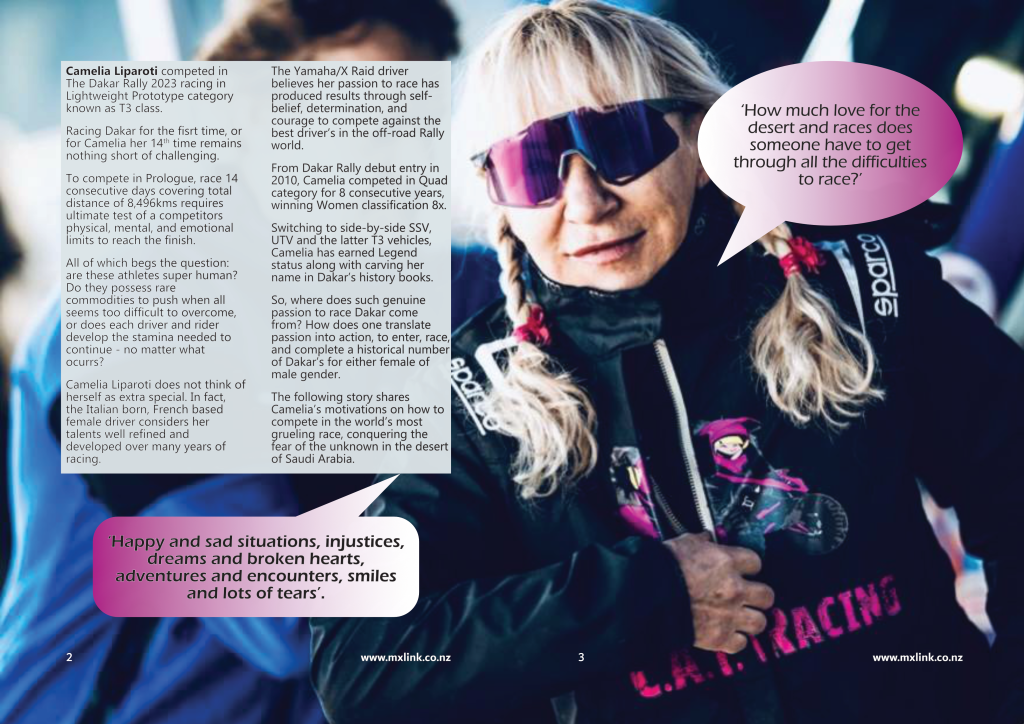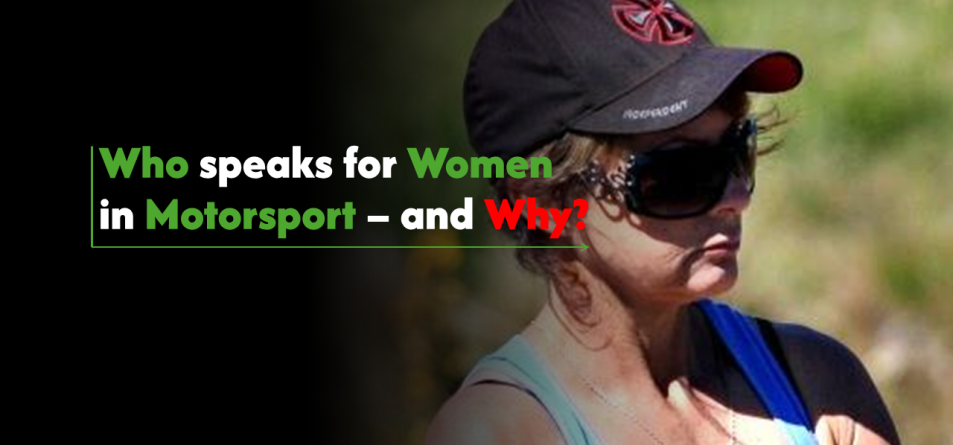Who speaks for Women in Motorsport – and Why? The question offers an opportunity to examine the importance of broadening awareness on women racing across FIA and FIM disciplines and why written and visual representations hold significance for understanding how women have actioned their racing careers from the past to the present day.

Starting with the experiences of pioneer women who set historical precedent to race at regional, National, and World Championship level in Europe, the America’s, Africa, Asia, and Australasia. Written stories, interviews, and images provide a candid glimpse on what these women achieved on track, which in turn has inspired younger generations of women to pursue a racing career, signifying the importance of documenting their journey’s for reader’s past and present.
No more so, than articles and comments made by Japan’s women racing in the early 1980’s and 1990’s providing insight on how each overcame tremendous social, economic, and cultural barriers to race, not only at home, but also in Europe. In an interview with racing car driver – Tomiko Yoshikawa in 2005 – she stated ”I dropped out of high school with no goal. I’d sit in my brother’s car for hours at a time. Then, secretly drive at night without my parents knowledge”. Tomiko went from rebel to working, saving money to buy old cars to race, starting her professional career at 26 years of age, and finishing 13th at Suzuka 500kms race in a Nissan Sunny.

Equally, Japan’s first women to race and finish the 24 Hours Le Mans – Keiko Ihara – speaks on the challenges she faced, from gaining support from her family, to entering the unfamiliar race environment in Europe, to working and racing hand-in-glove with the French-American Team in the most prestigous endurance race in the world. As Keiko states, ”there were language and cultural barriers, so instead of focusing on trying to be a perfectionist, I focused on what I was capable of doing”.
Taken in context, the documentation on Tomiko and Keiko bridge the gap between understanding how women achieved racing career progression 4 decades ago to applying that information to action racing plans in the present and for the future. Both women displayed enormous resilience in the face of real-time societal opposition for women to race – with both staying true to their sense of self-worth – pushing their racing capacity into unknown territory. Such dynamic stoicism can be gleamed in women who followed suit, across both Motorsport Federations.

There are a plethora of women who have gained legendary status from 2000 onwards, racing varying disciplines, winning Championship Titles, and increasing global following in the process. The advancement of technological information has enabled digital creators to deliver written and visual content on rider’s, driver’s, and racer’s track-side and remotely. Such manifestation of sharing women’s racing experiences with viewers and new follower’s has not only raised the profile of women in Motorsport, but has also extended the reach of content around the world.
Most certainly, the following women have continued the legacy set by their fore bearers from Italian Women’s Motocross World Champion 6x – Kiara Fontanesi, to Italian/French driver – Camelia Liporati racing her 15th Dakar, to Spanish rider and driver Laia Sanz completing 14 Dakar’s, to fellow compatriot Cristina Gutierrez winning Dakar Rally 2024 in The Challenger category, to Sandra Gomez becoming the first woman to finish Red Bull Romaniacs Gold Class.
Kiara Fontanesi speaks on racing WMX 2024 interview and film completed at MXGP of Maggoira, June 2024 Credit: MXLink
Each of these amazing women have set the tone by which self-determination has marked their career progression over the past 10 years. Written and visual content has enabled fans, followers, and new viewers to engage with the highs and lows of racing – celebrating the wins along with the disappointments that each woman has endured from one season to the next. The fact that documentation of what happened, when, how, and why has not only expanded the dialogue between rider/driver and mainstream audience, but also acts as reference for women racing in years to come.
No matter how women achieve their goals within their respective racing careers, knowledge gained from the courageous female trail-blazers of the past reminds all present of the challenges that have been overcome. And, only by reading, watching, and acknowledging those – now historical experiences – can the next generation of women racer’s achieve World Championship success.
Header photo: Sharon Cox. Words: Sharon Cox.





Comments are closed.